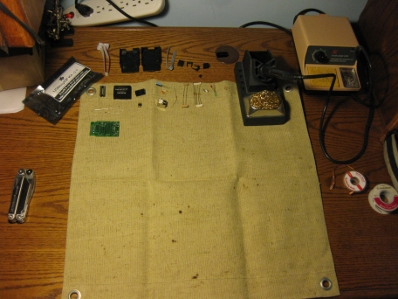I’ve been watching TED (Technology, Entertainment, Design) talks in the background lately, and it really is inspiring to hear truly brilliant people sharing with each other. The concept of the conference (which has been meeting since 1984) is to gather the brightest people in the three named fields, and have them share their ideas in 18 minute talks. CC-Licenced recordings of the best of the talks are released online on a weekly basis after the conference for the public to watch, this year’s are just starting to pop up.
Some of the standouts this year:
David Merrill: Siftables, the toy blocks that think – (person) I love physical computing, I love interesting UI design, I love embedded systems, and I love this talk. Reconfigurable smart little widgets that are aware of one another and able to interact in a natural way. This, and the other cool people it produces, makes me really think about trying to get into The MIT Media Lab for a Ph.D when the time comes. I had a promising conversation with a faculty member here at UK that knows people there, and it sounds believable that I would have a chance. (To self-plug, over on my Ideas Page, one of the works in progress is a dumber, simpler, hobbyist-accessible version of the same idea.)
Elizabeth Gilbert: A different way to think about creative genius — (person) I like her thesis that our culture has trouble dealing with genius, exhibited in the classic image of the tortured artist; I don’t like her idea that we should go back to the Greco-Roman idea that inspiration is external to the individual as a means to cope. As a writer, she is unsurprisingly an EXCELLENT speaker.
Some old favorites:
Anderson (Wired): Technology’s Long Tail – A good overview of the normal life-cycle of tech.
Mark Bittman: What’s wrong with what we eat — Seriously, the standard western diet is awful, and the way it got that way is evil. I’m not a vegetarian, I don’t even eat an especially great diet (mmm meat), but I always try to THINK about what I eat, and be aware of it, top down, which includes preparing a large fraction of my own food. I also like his notes that the current wash of “organic” and “local” is bullshit. The only thing I object to is that he seems opposed to the industrialization of food production, rather than the details of our industrial system (I like the idea of a future of vat-grown animal tissue and such). The thesis “eat real food” is really hard to object to.
Richard Baraniuk: Goodbye, textbooks; hello, open-source learning — He is an AWFUL speaker, both voice and style, and his particular instance Connexions is not exactly a shining example of success here, but the idea absolutely rings true to me. Old media is, or should be, dead or dying, especially in education. To modify a cliche, the medium changes the message; the use of, and expectation for the use of media, be it music, video, or text, is fundamentally different when it is distributed in a different medium. People expect to be able to interact with electronic media, to modify it, extend, and distribute it. One of my favorite things about electronic media is that it is instantaneously, interactively searchable. To make it even better, the cost of replicating digital copies, and the physical volume of those copies, approaches zero. The only impediment to all this good stuff is the old IP system. As an exemplifying anecdote, I had to ILL the article from 2005 referenced in my last post, because the journal it was in has a 5-year embargo on full-text databases. There is no technical impediment; only “oldschool” publishers not “getting it”. This is offensive to me. The situation that know exists with “piracy” of audio and video is creeping into textbooks; hit major BitTorrent trackers and you will see lots of digitized textbooks being traded now. At the same time, the situation is largely being avoided; watch people look for information, and they no longer look to old fashioned texts, they look at projects like connexions and Wikipedia that are built to embrace the new reality instead of trying to cling to the old.
This all jives very well with my personal anecdotal theory that “Interesting People are Interesting”: that is, that in general, anyone exceptional enough to be interesting in one way, will generally be interesting (and likely exceptional) in a variety of ways. It will usually be hard to articulate exactly HOW someone is interesting in a variety of ways; interesting people will find ways to interrelate and integrate their interests until they begin to appear seamless. Try to think of the neat people you know, I bet you’ll have trouble coming up with counterexamples.





